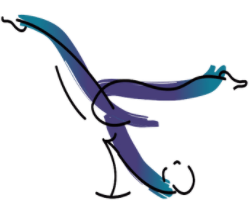Three Natural Ways to Relieve Back Pain
Regardless of lifestyle, Americans are more susceptible to back pain than ever before. According to Georgetown University’s Health Policy Institute, 65 million Americans (or 21 percent of the total population) report a recent episode of back pain, with eight percent of American adults experiencing persistent or chronic back pain. This can likely be attributed to increasingly sedentary lifestyles, made even worse by recent COVID lockdowns.
Before back pain can be ameliorated or treated, it’s important for us to identify root causes of the condition in our own lives.
What typically causes back pain?
There are many different causes of back pain, but some are more common than others. While there are more serious conditions like degenerative disk disease, spinal stenosis or scoliosis — or even back pain rooted in injuries like a herniated disk — the typical cause of back pain in most healthy individuals is just garden variety muscle strain. This can be caused by heavy lifting, pulling a muscle, or even from poor posture. Muscle strain usually goes away with time, provided proper treatment and rest.
Conventional painkillers such as opioids and non-steroidal anti-inflammatory drugs (NDSAIDs) have gained some notoriety in recent years for common side effects associated with their use, including severe nausea and allergic reactions — to say nothing of the former’s high abuse potential and risk of addiction. This has led to the increased public interest in more natural solutions to chronic pain conditions like back pain. In this post, we go over three safe and natural ways you can relieve your symptoms without breaking the bank.
CBD Supplementation
Cannabidiol (CBD) has drawn the attention of medical researchers for its therapeutic potential, most notably its analgesic and spasmolytic properties. CBD’s ability to relieve pain is rooted in its modulatory influence on the human endocannabinoid system (ECS). The ECS is a network of cannabinoid receptors primarily located in the nervous system, immune system and peripheral organs. By binding to these receptors, CBD can indirectly influence our uptake and sensitivity to key hormones and signaling molecules like serotonin and dopamine. This includes neurotransmitters like cytokines, which control the inflammatory response, and prostaglandins, which play a primary role in our pain response.
While CBD has not yet been approved by the FDA as a form of treatment for any disease, it does enjoy the support of numerous authoritative peer-reviewed studies, along with large-scale anecdotal evidence in the form of millions of customer reviews around CBD products. CBD is also quite versatile; isolates can be vaped, taken sublingually or mixed into food, while full-spectrum CBD powder can be blended into fruit smoothies and protein shakes.
Deep Tissue Massage
Deep tissue massage is a type of massage therapy that focuses on realigning deeper layers of muscles and connective tissue. It’s especially helpful for chronic aches and pains in the back, shoulders, and neck. Deep tissue massage is a beneficial treatment for a number of different conditions, some of the most common of which include:
● Chronic pain
● Limited mobility
● Recovery from injuries (e.g. whiplash, sports injuries)
● Repetitive strain injury (e.g. carpal tunnel syndrome)
● Piriformis syndrome (a condition where the muscle that runs from the hip to the outer edge of the thigh bone is tight and puts pressure on the sciatic nerve)
● Plantar fasciitis (heel pain)
● Myofascial release (a type of soft tissue therapy that releases tension in the muscles)
When giving a deep tissue massage, therapists will use slow, deliberate strokes that focus pressure on layers of muscles, tendons, or other tissues deep under your skin to break down adhesions and restore healthy blood flow to problem areas. They may also use elbows and forearms to increase the pressure as needed.
Deep tissue massage is typically used in conjunction with other massage techniques. It’s important to tell your massage therapist if you’re experiencing any pain or discomfort during the massage so they can adjust the pressure accordingly.
Pilates Exercises
Pilates is a great form of exercise for people suffering from back pain. The controlled, low-impact movements help to strengthen and stretch the muscles in the back, providing relief from pain and helping to prevent future injuries. Additionally, the focus on breath work and proper alignment helps to improve posture and keep the spine in proper alignment, which can also help to reduce back pain.
Pilates is a great way to improve your overall health and fitness. It can help you maintain a healthy weight, improve flexibility and posture, and even tone your muscles. Pilates is also an effective form of exercise for those with other chronic pain conditions such as arthritis, fibromyalgia symptoms or neurogenic pain. Pilates is a low-impact form of exercise that’s easy on the joints and can be done in either group settings or at home with minimal equipment.
If you’re looking for a way to improve your overall health and fitness, consider adding pilates to your routine. It’s an effective, versatile and safe form of exercise that can help you achieve your fitness goals. If you’d like to book a class with us, visit our planning page here to get started!


